HMS Cricket Wreck Cyprus
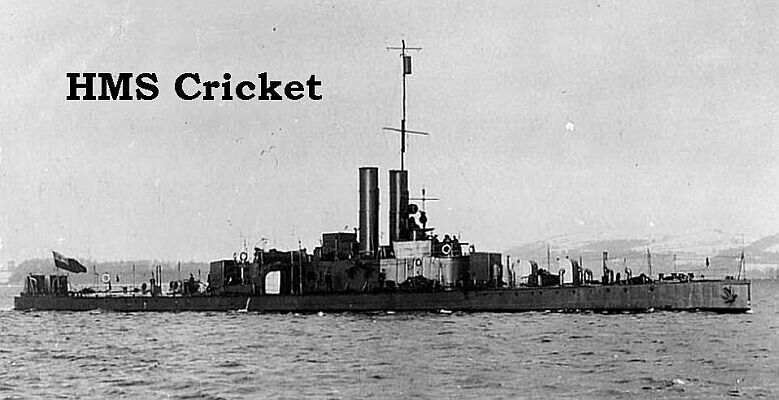
Dive Site: “HMS Cricket†Wreck Dive
Location: Larnaka Coast Cyprus
Depth: 33m
Visibility: 10m to 25m
Situated off Larnaka, this dive is an opportunity to explore an old British battleship that rests upside down on the seabed at 27 metres. The World War Two gunboat survived the war. It was then anchored in Larnaca Bay and used as target practice by the RAF but sank in 1947 due to bad weather.There is a sandy dip under the wreck. Divers can swim inside the hull through escape hatches and underneath the wreck. HMS Cricket Cyprus shipwrecks, the vessel is also home to groupers and other fish. Visibility is some 25 metres. The maximum depth is 33 metres.
This article was wrote in Aberdeen in 2001. It was based on seven dives carried out between 1997 and 2000, a lucky observation of an Insect Class river gun boat at the Imperial War Museum, and access to the libraries of that museum and the Lowestoft Nautical Museum. I drew some conclusions that, in part, I know now to be incorrect. The corrections are included below and were pointed out by Robert Peace who drew my attention to the excellent researches of Goeff K. Brown. Goeff discovered the wreck in 1986 and made hundreds of dives on her, successfully identifying the hull as . Whether part of the wreck is HMS Gnat is probably unlikely, although not impossible.  There’s a great account of these ships in “Armed with Stings†by Cecil Hampshire, 1958.
HMS Cricket Wreck Cyprus Introduction
HMS Cricket Wreck  Cyprus, was one of ten Aphis Class (Large China) Gunboats constructed during the First World War to counter Austro-Hungarian monitors on the River Danube. Due to be scrapped in 1939, her life was extended by the outbreak of the Second World War. Her ultimate fate is not currently understood, however, an Aphis class gunboat, popularly known as ‘the Cricket’ lies on the seabed north-east of Larnaca, Cyprus.


HMS Cricket Wreck Cyprus Technical Description
Designed for use on shallow rivers these gunboats saw service on the Tigris and on the Danube during the Austro-Hungarian crisis during the First World War. The ships could be disassembled and transported to the rivers where they would be used. The reference to ‘China’ in the class name was to confuse the enemy as to their final destination; (ref. 1).
A summary of the specifications (ref. 1) are included below; more details of all ships of this class are to be found in Appendix 2; (ref. 2).
HMS Cricket Ship
• Large China Gunboat Aphis Class
• 645 tons; 72.5 m long; 11.0 m wide; 1.2 m draft
• 6″ guns were carried fore and aft of the superstructure
• Powered by two triple expansion engines fed from boilers mounted amidships
• Built by Barclay Curle in 1915 under the supervision of Yarrows
• Service speed 14 kts but substantially faster on trials
On the 2nd floor of the Imperial War Museum in London is a cased model of HMS Mantis, sister ship of HMS Cricket. From photographs of this model, all the subsequent diagrams have been constructed.
The Fate of HMS Cricket Wreck
Various publications differ on how HMS Cricket was damaged, but all agree that it was in the Southern Mediterranean in 1941.
Jane’s (ref. 1) suggest that the ship was hit by an enemy torpedo and the stern was blown off. Ref. 2 claims that the ship was bombed by German aircraft off Tobruk, Libya on 30th June 1941 and subsequently sold and scrapped the same year. A reference from the Lowestoft Naval Museum (ref. 3) states that the ship hit a mine at Mersa Matruh, Egypt and was broken up at Alexandria in 1942.
From these accounts, it would seem that the ship was badly damaged in the stern near the North African coast. In view of the ship’s unusual un-pierced bulkhead design (appendix 1), it would have been quite feasible for the ship to sustain severe damage and remain afloat. The ship would have ended up at the yards in Alexandria.
To progress further, it is worth noting the history of two other ships of this class. Firstly, HMS Gnat, the damage to which is consistently recorded in the different references. On the 21st October 1941, HMS Gnat was torpedoed off Bardia, Italy (not on modern maps). Again, the ship’s remarkable construction seems to have kept her afloat for a long tow across the Mediterranean where she was beached at Alexandria as an anti-aircraft platform. The Gnat was then scrapped in 1944 (ref. 2) or broken up in 1945 (ref. 3). Interestingly, Jane’s of 1946/7 (ref. 4), which summarises the disposition of all ships active in the Second World War, notes that there was a proposal to join the two serviceable ends, the bows of the Cricket and the stern of the Gnat which was abandoned as infeasible. Again, the construction of these ships makes this suggestion quite possible since they were designed for disassembly and re-assembly.
(The section in italics was my conjecture before I read Goeff Brown’s article. I have added corrections below.)


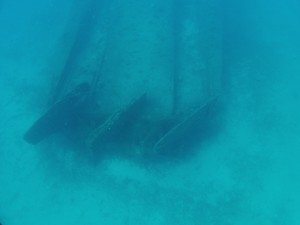
So is the wreck off Cyprus HMS Cricket, HMS Gnat, or a combination of both ? The wreck is obviously a hulk stripped of all components, armament, engines, boilers and shafts. This could not have been carried out after the sinking since the ship is inverted with no bottom openings. I guess that after the war, the engines, guns, boilers and everything of value was stripped from the two hulks and the bows of the Cricket joined to the stern of the Gnat; but by whom ? The Royal Navy could have done this and then used it as a target for shore or sea-based artillery. The inverted hull prevents investigation of shell damage, but I believe this option is unlikely, since the Navy at that time had many old hulks for target practice.
Perhaps the two parts fell into less salubrious hands and they were joined together and used as a towed hulk for the illegal transportation of Jewish refugees to Palestine which was rife after the war. Many Jews were secretly shipped from detention camps on Cyprus to Palestine in the most un-seaworthy vessels. I have heard rumours that the hulk was an illegal transport and was sunk by the Royal Navy, hence the lack of information about this sad episode.
This, however, leads us to another possibility. One of the Aphis Class sister ships, HMS Tarantula, is described (refs. 2 & 4) as being dismantled and then sunk as a target by HMS Carron and HMS Carysfoot on 1st May 1946 off Ceylon. Is this the Ministry of Defence being coy, and describing the date of the Tarantula’s sinking correctly, but substituting one Island Cyprus, for another, Ceylon ?
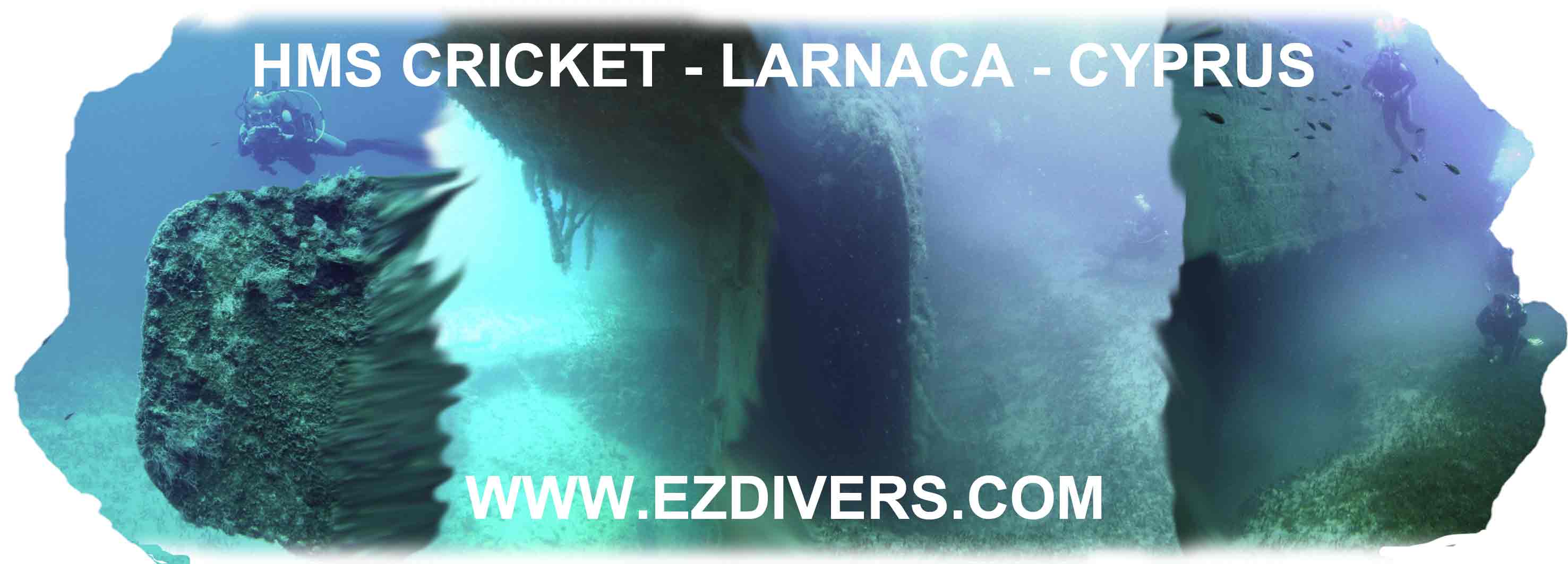
Addition (November 2005, Brunei)
Goeff Brown has identified enough of the wreck to confirm that it is HMS Cricket in Cyprus, He has an account from a Cypriot eyewitness who saw it sink in August 1944. It wasn’t bombed or shelled for practice, the RAF appears to have used it to train pilots on attacking formations. The ship simply sunk through the damage sustained in 1941. The lack of engines’ and boilers’ weight allowed it to roll over and sink inverted.
The plans to join the Cricket and Gnat may or may not have happened. The fact that the ship was down by the stern and the aft section full of water (eye-witness account) suggests that the original damage may still have been present. The valuable parts would have been salvaged in Alexandria and the hulk towed to Cyprus for RAF training.
There is documented evidence that HMS Tarantula did sink off Ceylon.
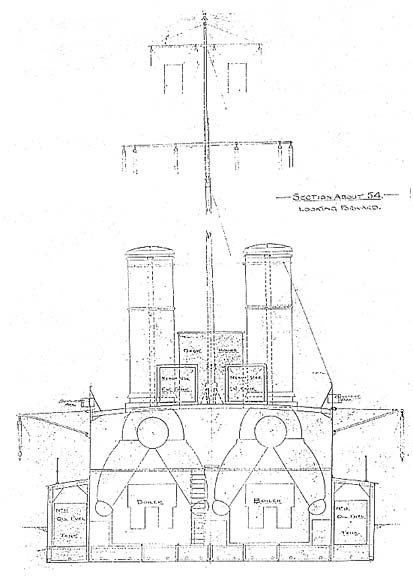
Diving the HMS Cricket Wreck Cyprus:
The resting place of HMS Cricket Cyprus lies close offshore Southern Cyprus in Larnaca Bay at approximate coordinates (WGS84 34o 58′ N 33o 49′ E). The wreck lies inverted with the bows pointing west on a general sandy bottom at about 29 metres with a scour under the wreck reaching a maximum depth of 32 metres.
The relationship of the original ship to the wreck can be seen below. If it wasn’t for the scour (which according to local divers has appeared and disappeared over time), only the hull would be visible. The scour has permitted access to the stern deck and many parts of the lower superstructure.
The ship is often buoyed at the stern since it is dived regularly by the army. The immediate impression on descent is the peculiar arrangement of triple rudders projecting from the stern and frozen hard a port. Immediately adjacent are the twin propeller tunnels which allowed the propellers to be counter-sunk into the hull. The shafts and propellers are gone. Inspection of the wreck reveals that there are no engines or boilers either. The ship was an empty hulk before it sank or was sunk.
On arrival at the rudders at about 26 metres, the direction of the current should be determined so that silt from the first side of the ship to be dived does not flow across to the other side. The scours allow complete access to the deck of the stern and to much of the lower superstructure, where rotted plates permit access into the body of the vessel. The engine room can be entered on the (original) port side. The propeller shaft openings are still visible in this large space. Passing through rusted holes, the boiler room can be reached and exited on the starboard side of the ship. The diagram below is a plan view of the inverted ship.
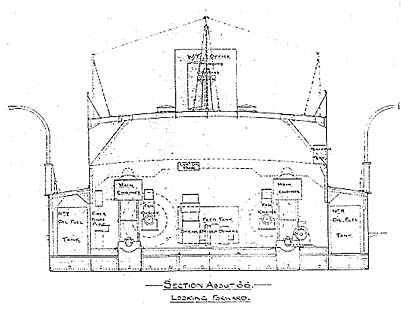
Standard wreck precautions of avoiding sharp edges and not disturbing the silt apply strongly to the Cricket.
Having passed through the body of the engine room and boiler room, only smaller spaces are left and often these are tight under the limited space between the ship’s inverted deck and the seabed.
Nevertheless, the raised forecastle has created a space to investigate as the bows are reached some 72 metres from the stern. The stern itself lies just above the seabed and the restricted space between the shaft tunnels and the deck can be investigated. Beware, this is a one man operation and so some bail-out should be carried. Arriving back at the rudders after 25 minutes there is little time to study the strange structure that would have stood on the end of the ship over the stern. It is simply the ‘thunder box’! What is very obvious is that there is no apparent damage to the stern; not even the fragile exterior toilets. This part of the ship is most unlikely to be the Cricket.
Another point of caution. Although the wreck is on average at about 29 metres, the time spent circumnavigating the wreck takes about 25 minutes and will therefore incur decompression penalties of five minutes or more. During decompression, the wreck can easily be seen in the usual 25 metres visibility.
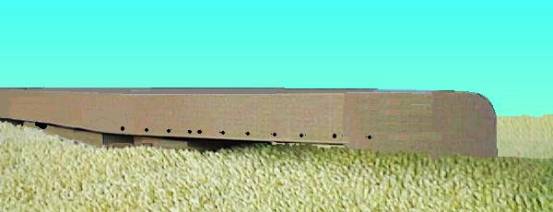
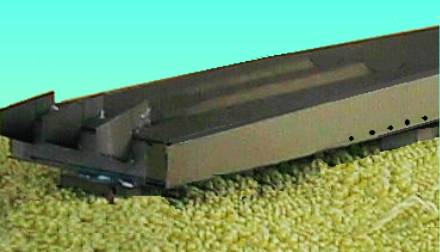
Appendix 1:
Data from Lowestoft Nautical Museum: 6th June 2000:
HMS Cricket Wreck Cyprus Hit mine in 1941 at Mersa Matruh, Egypt
Broken up at Alexandria 1942
Appendix 2:
Aphis Class Gunboats
Name Pennant Builder Completed Fate
Cricket T75 Barclay Curle 1916 Bombed by German aircraft off Tobruk 30/6/41, sold & scrapped 1941
This class was laid down in WWI to engage Austro-Hungarian monitors on the Danube. The latter were armed with 5.9″ guns and could steam at 13 knots. This dictated that the RN ships must have 6″ guns and steam at 14 knots.
They were curious in that the bulkheads were un-pierced, and to get to the next apartment required leaving via the roof hatch, out and back in the next roof hatch!
Those that survived the Japanese attacks on ‘China Station’ were moved to the Mediterranean and were modified with captured Italian guns.
Dimensions & Displacement
Displacement 625 tons Length 237′6″ Beam 36′ Draught 4′
Performance & Propulsion
Machinery 2 x Yarrow small-tube boilers, 2 x vertical triple expansion engines driving 2 shafts @ 2000 ihp Kts 14
Complement & Armament
Complement 55
Armament
Cricket • Gun
• 2 x 1 x 6″ BL
• 1 x 1 x 75mm Italian field gun
• 1 x 1 x 2pdr pom-pom AA
• 2 x 1 x 20mm Breda AA
• 12 x 1 x 8mm Italian MG AA